Pena Palace, in Sintra, is one of the most famous palaces in Portugal, with its colorful exterior that looks straight out of a fairytale. Wanna know more? Then this post if for you!
If you’re planning a trip to Portugal, you’ve probably already heard of Pena Palace. This 19th century Romantic castle is one of the most famous places in the country, and rightfully so!
Located on the hills of Sintra, about 1 hour away from Lisbon, this former royal residence looks straight out of a fairytale, with its yellow and red façade, stunning architecture, lush gardens and terraces with truly breathtaking views.
But, trust me, it’s not just a beautiful castle: it also has a long and fascinating history, which only adds to its charm.
To help you plan your trip to this must-visit destination, I’m going to share everything you should know to have a more enjoyable experience at Pena Palace. So, join me and get ready for the trip of your life!
Pena Palace In a nutshell
- Highlights: colorful façade, interior decoration, terraces and gardens
- Opening hours: 9:30am – 6:30pm
- Best time to visit: Spring and early fall
- Tickets / price: € 20 (adults), € 18 (youths and seniors).
- Recommended duration of visit: 2 hours minimum
- Address: Estrada da Pena, 2710-609 Sintra, Portugal
- Nearest station: bus: Palacio da Pena, train: Portela de Sintra
Index
- History of Pena Palace
- Points of interest
- Architecture
- Opening times and best time to visit
- How long does it take to visit?
- How to get tickets?
- How to get there?
- Attractions nearby
- Where to stay near Pena Palace?
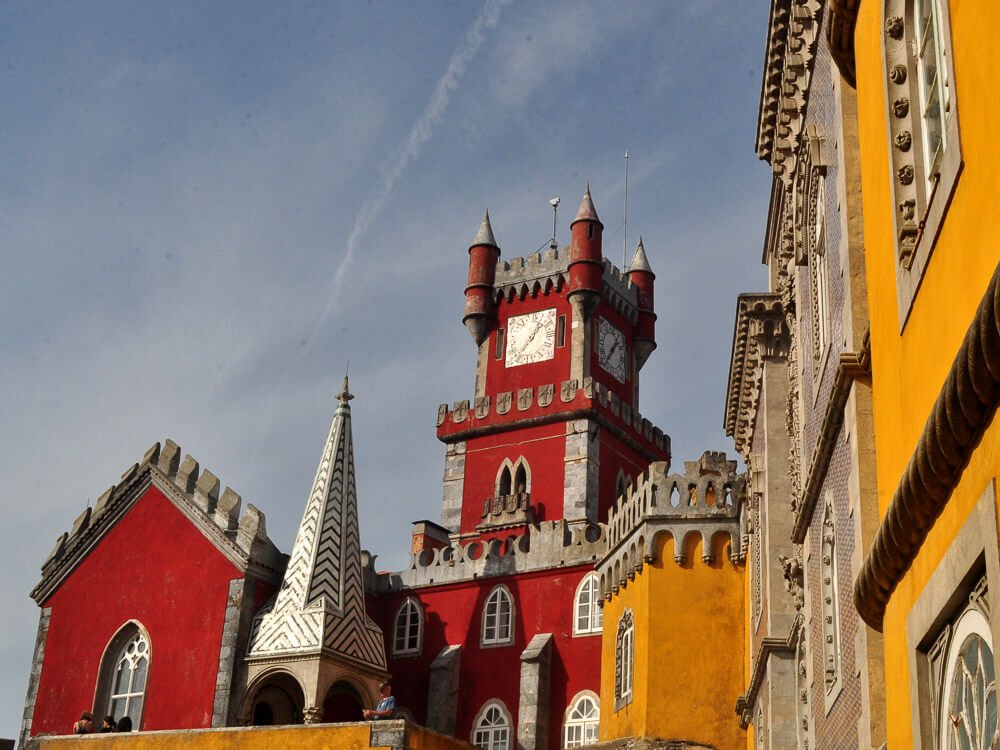
1. History of Pena Palace
The history of Pena Palace starts in the Middle Ages, when a chapel dedicated to Our Lady of Pena was built on the hill where the palace now stands. In the 16th century, King Manuel ordered construction of a monastery at the same place, and for centuries it was a quiet place where monks lived.
However, this monastery was largely destroyed by the earthquake of 1755, which left only its chapel standing. Even though it was left in ruins for decades after, King Ferdinand II fell in love with the place and, in 1838, he purchased what remained of the monastery and all the surrounding lands.
Inspired by the Romantic movement, he decided to turn it into a summer residence for the royal family, and construction began around 1840 with several architects involved. The renovation was finished by 1854, and many royals lived there until it was bought by the Portuguese State in 1889, due to financial problems within the monarchy.
Pena Palace became a national monument in 1910 during political shifts that led up to the Republican revolution, and is considered one of the Seven Wonders of Portugal. Today, it represents an important part of the country’s culture, inviting us to understand how the royals lived and their historical significance.
2. Points of interest
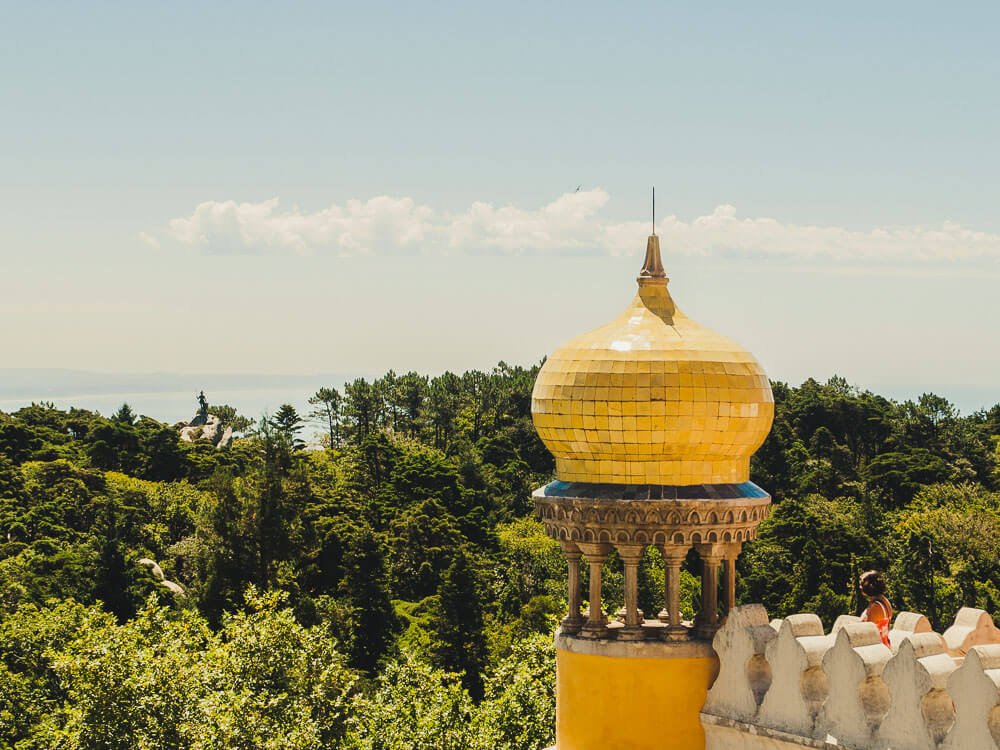
2.1. Royal quarters
The royal quarters of Pena Palace have significant historical value, and are a highlight of any visit. The Manueline cloister, for example, is a remnant from the original convent. There, you’ll be able to visit the sacristy and chapel to see the original alabaster altarpiece made by one of Jerónimo’s Monastery architects, as well as a stained glass window from 1841.
The Dining Room used to be the convent’s refectory, and features a 16th-century vaulted ceiling and solid oak furniture in Manueline style. Tiles from the 19th century adorn the walls and there are displays of beautiful porcelain plates.
King Carlos’ Chambers is another highlight, as it served as both his office space and personal living quarters. Among his belongings are paintings he created himself, and his chambers include what was a cutting-edge feature in the 19th century: a bathroom with hot water.
2.2. Decoration
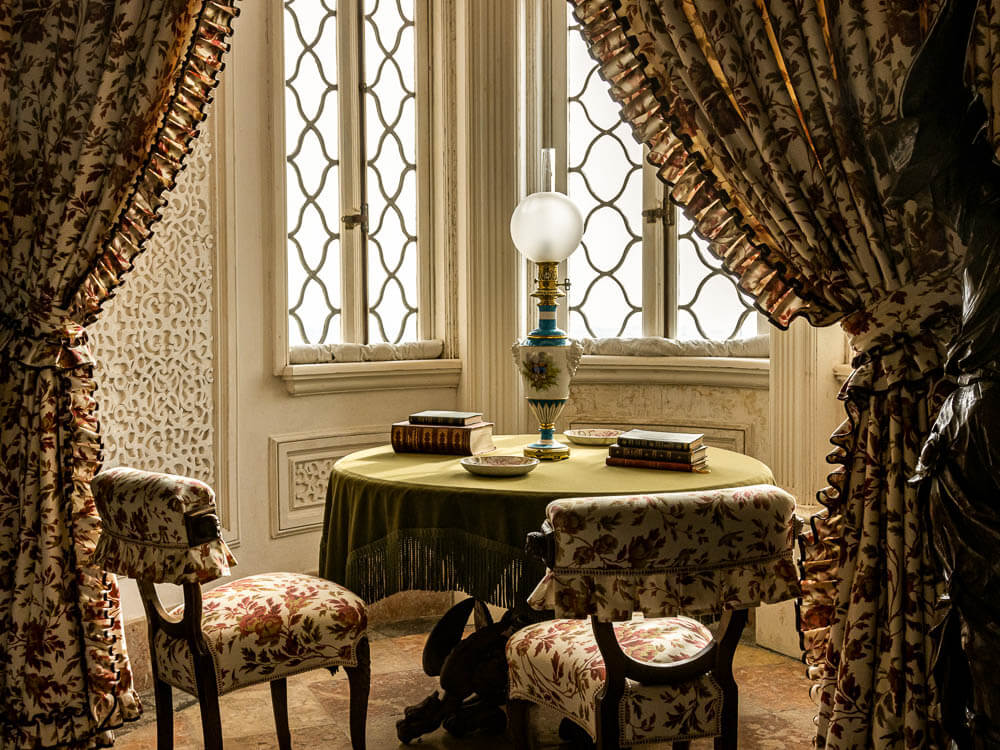
The decoration at Pena Palace is opulent and definitely royalty-worthy! The walls feature trompe l’oeil paintings, which give them a sense of depth, there are traditional Portuguese azulejos throughout the entire palace, as well as murals, frescoes, and mosaics.
I was also fascinated by the Arabic Room, which showcases Islamic architecture through patterns on both walls and ceilings, and the Indian Room, which is filled with stunning furniture from India.
2.3. Gardens and park
Besides the stunning interiors, Pena Palace also has an English-style garden with numerous plants and trees from different parts of the world. Known as Pena Park, it contains pavilions and decorative buildings alongside water features like waterfalls, ponds, lakes, and fountains.
It’s such a peaceful and beautiful place that I could spend an entire day just exploring all of its features!
One of the highlights is the Queen’s Terrace, which offers panoramic views of the mountains surrounding the palace. Standing there, I completely understood why King Ferdinand was so astonished by this place!
There’s also the Valley of Lakes, a peaceful environment where five interconnected lakes serve as home for numerous ducks, and the Fountain of Small Birds, a beautiful Islamic-style pavilion that features Arabic inscriptions. Other noteworthy features are the Garden of Camellias, with plants dating back to the 19th century, the Queen’s Fern Valley.
Nearby, you’ll also be able to visit the Chalet and Garden of Countess d’Edla, a cork-lined construction inspired by alpine chalets, built in 1869 and designed by Ferdinand’s second wife. Its carefully detailed interiors and surrounding gardens are truly breathtaking!
3. Architecture
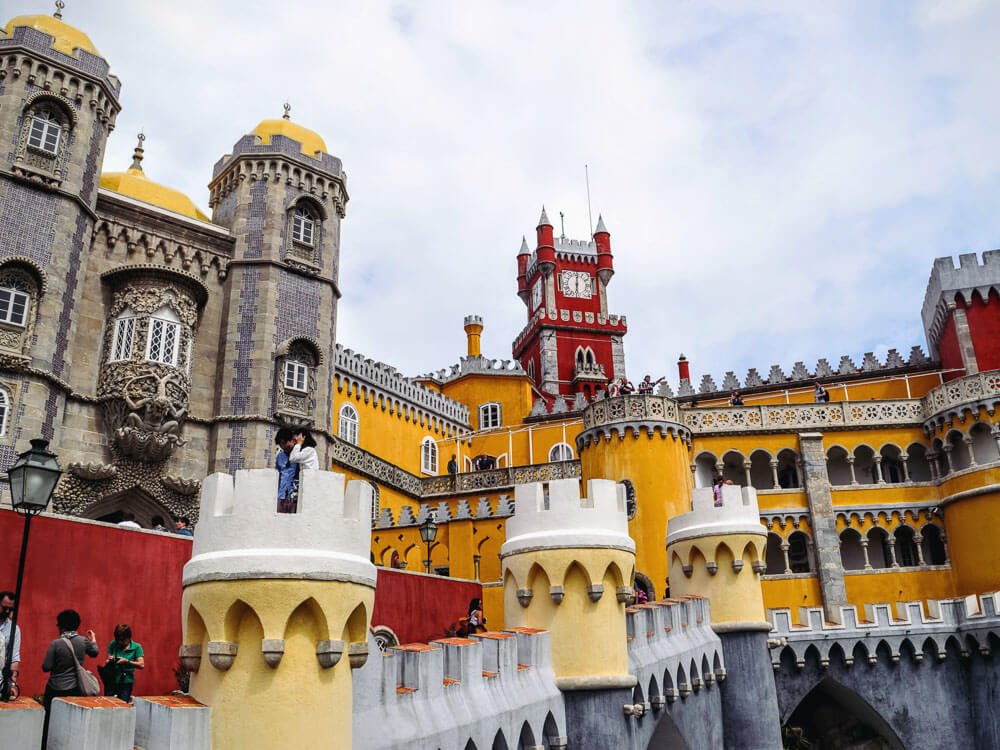
The Pena Palace is a Romantic castle, and as such it showcases an eclectic mix of architectural styles, with Moorish, Gothic, Manueline and Renaissance influences. It was designed by German architect Wilhelm Ludwig von Eschwege, according to King Ferdinand II’s ideas.
The renovation of the former monastery began in 1840, resulting in the red buildings that we see today. By 1845, Ferdinand had initiated the construction of an additional section called the New Palace, recognizable by its yellow exterior. It was greatly influenced by Bavarian castles, and introduced new living spaces.
In the late 20th century, the façades were restored to match their original colors, which is why the red and yellow walls are so lively today. Sintra residents didin’t welcome this decision at the time, but I think it’s amazing to be able to experience Pena Palace as it once was.
Plus, the colorfulness of the palace is one of the things that truly makes it stand out among other castles, and it only adds to the fairytale vibe!
4. Opening times and best time to visit
Pena Palace opens daily from 9:30am to 6:30pm. The last ticket is sold at 5:30pm and the last entry is 30 minutes before closing. Meanwhile, the park is open from 9am to 7pm, with the last ticket and entry at 6pm.
Keep in mind that Pena Palace is busiest from 10am to 3pm. And, trust me, it can get really crowded, to the point of getting in the way of your experience. To have a more pleasant visit, I recommend arriving right when it opens or after 4pm, when there are typically fewer people.
As for the time of year, the best time to visit Pena Palace and Park is during spring or early fall, when temperatures are mild and there aren’t as many tourists, ensuring a more comfortable experience.
Winter also offers a good opportunity to visit Pena Palace, as there are even fewer tourists. However, the weather during this season can be quite unpredictable, with possible rain and cold days. As long as you bring a nice coat, though, you’ll still have a great time!
5. How long does it take to visit?

Overall, I recommend setting aside at least two hours to visit Pena Palace and Park. This should be enough time to tour the interior of the palace, which takes about an hour, and enjoy some outdoor time at the terraces and gardens.
However, for a complete experience, I think that spending half a day at Pena Palace is ideal. With more time available, you’ll be able to move through both the indoor and outdoor areas without haste, enjoying breaks in scenic spots along the way.
6. How to get tickets?
Tickets to Pena Palace tend to sell out, so I highly recommend that you book them in advance through verified online platforms or from the official website.
When you buy your tickets, you’ll have to select a time slot of 30 minutes for entry. Make sure to arrive on time, as the scheduling is very tight and you won’t be able to enter if you arrive late!
Ticket options include a € 20 ticket for both palace and park access, while a € 10 ticket grants only park and terrace entry. So, if you’re short on time or don’t want to visit the interior of the palace, that’s a great option!
There’s also an optional mobile audio guide that provides information on each site’s historical context. A downloadable digital map is also available, and it’s very useful for navigating the large area of the national park, ensuring that you make the most of your exploration.
7. How to get there?
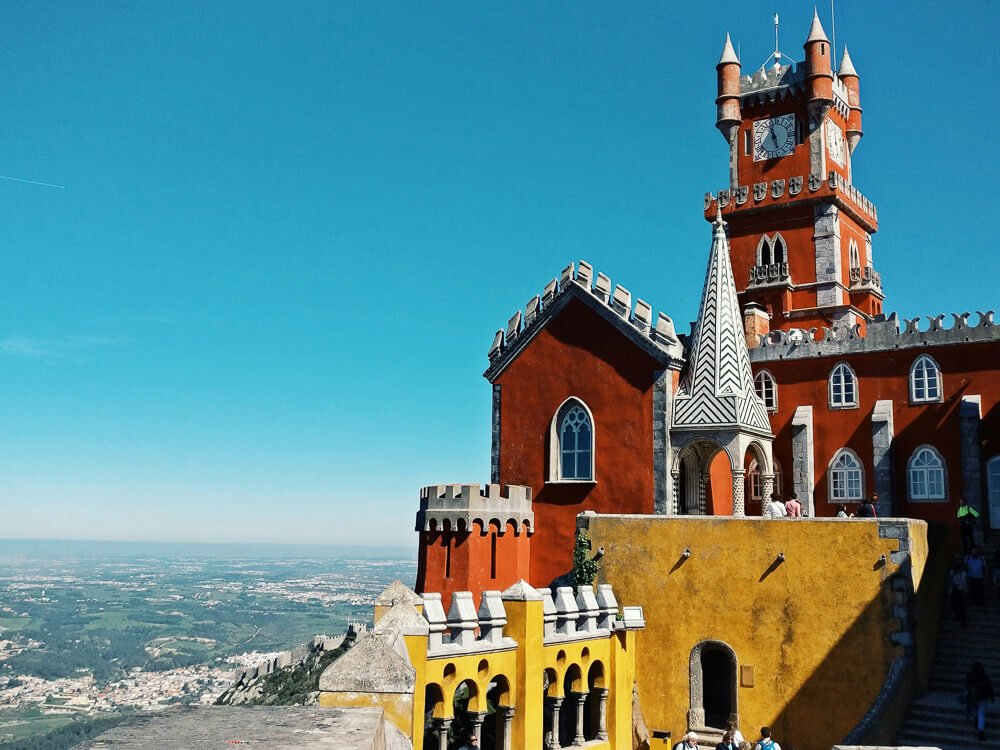
Public transportation is a practical choice for reaching the Park and National Palace of Pena. From Lisbon, trains depart from major stations such as Oriente, Rossio, or Entrecampos to Sintra Train Station. Here, visitors can transfer to buses 1253 or 435 that go directly to the palace.
If you’re willing to spend a bit more, you can take a taxi or Uber from Lisbon. Taking a tuk-tuk is also a good option if you want a more unique experience, but be aware that prices may fluctuate based on demand and negotiation.
Close to the palace, there’s an uphill walk towards Pena Palace. Some visitors may enjoy this walk while others can use the bus service at hand, which takes them nearer in just a few minutes.
8. Attractions nearby
Nearby stands the Moorish Castle, located on the Sintra Hills, a well-maintained fortress from the 8th century, providing visitors with extensive views across the terrain.
Close to Sintra’s historic center is Quinta da Regaleira, an estate dating back to the early 20th century featuring a palace that combines Gothic and Renaissance elements within its gardens.
There’s also Sintra National Palace, which functioned as a royal residence between the early 15th century and late 19th century, with distinctive white chimneys and detailed interior tiles.
9. Where to stay near Pena Palace?
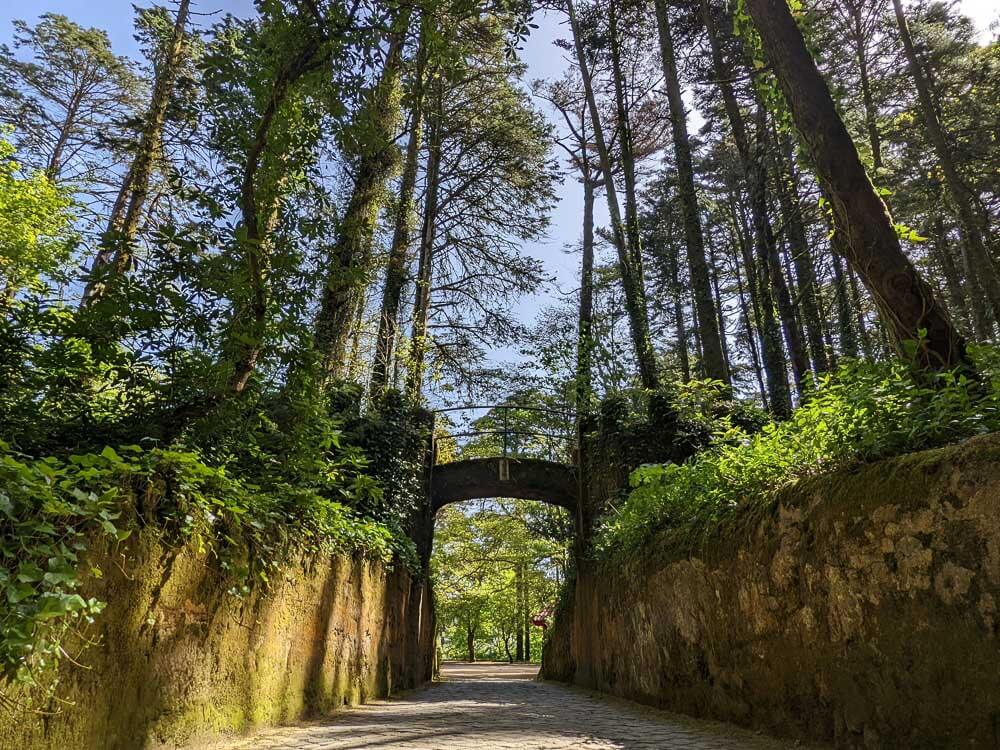
If you’re planning on extending your visit to Sintra, there are a lot of great accommodation options. Here are a couple of my recommendations:
- Storytellers Villas: with a great location, just 1.4km from Pena Palace. This charming hotel offers rooms with a private bathroom, coffee machine and flat-screen TV. Guests can enjoy the hotel’s continental breakfast daily and unwind on the terrace.
- Sintra Bliss Hotel: located in the center of Sintra, just 140m away from Sintra Train Station and 4km away from Pena Palace. This designer hotel has contemporary interiors and offers comfortable rooms with air-conditioner, free Wi-Fi, and a scheduled breakfast menu.
- Sintra Boutique Hotel: located in the center of Sintra. This hotel offers modern and spacious rooms with views of the old town and Sintra-Cascais Natural Park. There’s a garden and a bar where guests can relax and enjoy a delicious meal.
Ready to have a memorable experience at the stunning Pena Palace?

It’s safe to say Pena Palace really stands out among all other castles. Not only because of its colorful exterior, eclectic mix of architectural styles and well-decorated interiors. But also because it has incredible views that have captivated people for centuries!
It reflects the Romantic era and the 19th century architectural innovation, and gives visitors a glimpse into the lives of the royals that lived there. If you’re a history or architecture lover, this is absolutely a place you can’t miss during your trip to Portugal!


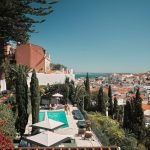
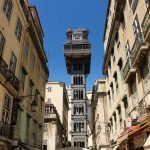
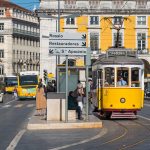
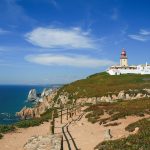


1 thought on “Pena Palace: what to know before visiting”